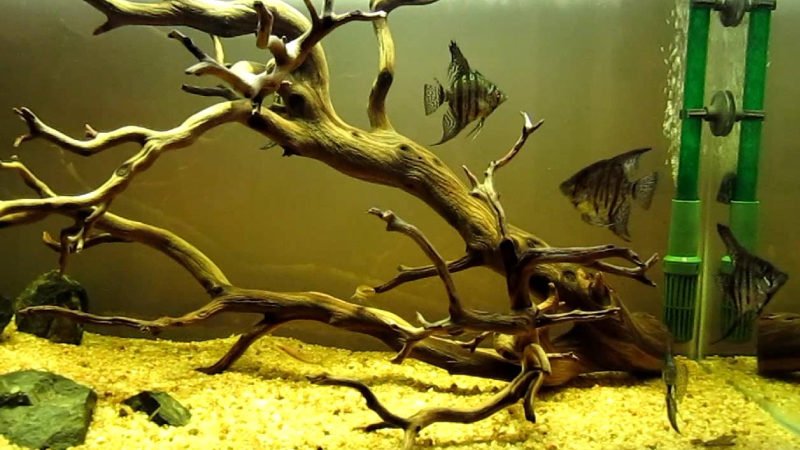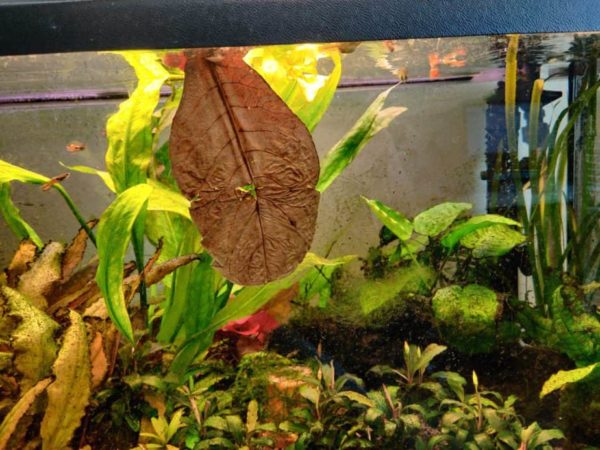The angelfish is a species of fish that is commonly kept in aquariums and tanks. The freshwater species of Angelfish are the most common choices when it comes to keeping a fish as a pet at home.
There are several things you need to know when you have angelfish at home to understand how to take care of them properly. One of them is the ideal ph level for angelfish and how a change in pH can affect your fish.
Keep reading this article to know all about the ph level for angelfish.
Related Articles
- Best Freshwater Angelfish Tank: Requirements, Setup Ideas & Basic Steps To Build
- 15 Best Live Plants For An Angelfish Planted Tank (With Pictures)
What Is The Ideal pH Level For Angelfish?
Angelfish are known to be able to survive in a wide range of pH levels. The water that they prefer does seem to be soft water that is a little acidic. They seem to like pH levels between 6.5 and 7.1.
However, you should also consider whether you intend to breed angelfish when choosing a pH level for the fish. Ideally, you should strive to set the pH level of your aquarium at 6.8 when breeding angelfish.
What Happens To Angelfish If the pH Level Is Too High?
Angelfish can suffer damage from a high pH level. The most significant concern here is a chemical burn that can occur due to the high pH level. There is an increase in the concentration of minerals and chemicals in water when the pH level of the water is elevated. In this case, the fish may experience burning on the surface of their skin. Angelfishes can suffer many health problems due to the burns on their skin.
When angelfish are placed in high pH water, there is also a high likelihood of skin chapping. Additionally, alkaline water can also lead to stress in angelfish. This can adversely impact the fish’s health.
Having a pH level that is too high may not directly cause the angelfish to die. Instead, it may cause complications that ultimately result in death. Stress, chapped skin, and chemical burn are examples of this.
What Happens To Angelfish If The pH Level Is Too Low?
A low pH level in the tank can also cause problems. We know that to breed successfully, angelfish need an ideal pH level. When you find that the pH level of the water in your aquarium is lower than 5, you can be sure that it is not possible to breed your fish.
You should never let the pH level fall below five when breeding Angelfish. If you have Angelfish in your aquarium, ensure the pH doesn’t fall below four at any time. Below that pH level, your Angelfish will experience problems with their health and wellbeing.
As a consequence of the acidity of the water, the fish will likely experience skin burns. They will also probably die from the low acidity. When fish are burnt by acidic water, they can die.
Angelfish prefer slightly acidic water, but it shouldn’t be too much acid.
How To Lower The pH Level In The Tank?
If you want to change the pH level of your aquarium, you first have to determine what the current pH level is.
A comparison should be made between the ideal pH level for angelfish and the current pH level of the water. When the pH level is too high, you should take the appropriate steps to help reduce the pH level.
If you want to lower the pH level of your fish tank, you can take both short-term and long-term solutions into account. You will also find that some options will be more effective than others. However, simultaneously, you want to avoid dropping the pH level suddenly by applying some of these options. Instead, you want a solution that will gradually lower the pH.
A sudden decrease in the pH level of a tank causes the angelfish to become stressed. Stress is detrimental to the health of the angelfish. It can lead to a wide variety of health issues.
Natural Way

If you want to lower your pH naturally, try using driftwood or peat moss. They will release tannins into your tank’s water, reducing the pH.
The only downside is, that they can discolor your water.
Add Indian Almond Leaves To The Tank
An Indian almond leaf will slowly decompose when added to your aquarium. While it is doing so, it releases tannic acid and tannins into your aquarium, as well as other substances. With the release of tannic acid, your water’s pH level will lower.

However, you must be careful. If you add too many Indian Almond leaves to the tank, the pH level of the water will drop significantly. The water’s pH level can drop below six if you add too many Indian Almond Leaves to it. If the water was already soft when the leaves were added, the pH could drop to five or even lower in some cases. If this occurs, it can cause harm to the angelfish you have kept.
To begin with, just add a couple of these leaves to the tank. Check the pH of the water after a few days. You can consider adding more leaves if the water has not reached the right pH level.
Don’t Add Tap Water Immediately
Generally, tap water has a high pH level. Ensure that you do not add tap water to your tank immediately if you are using it for your tank.
Adding too much tap water quickly will cause a sudden change in the pH levels of the water. In turn, the angelfish will be shocked and stressed.
Instead, the water should be left outside for a while. It would be ideal if it were left for a few days. The water container should be open so the water can become aerated. As a result of this process, the pH level in the tap water drops, creating the perfect environment for an angelfish to survive.
How To Raise The pH Level In The Tank?
Whenever the pH of your water tank goes below five, you’re in for a bit of trouble. Maintaining a pH level that is ideal for angelfish is very important.
In order to keep your pH levels up and also to boost pH levels if they have fallen too low, there are a few ways that you can rely on to help you.
The Baking Soda Method
Baking soda is a method that most fish keepers are familiar with. It is one of the most popular methods of increasing the pH levels in a tank. A teaspoon or two of baking soda is all you need, depending on how much water your tank has.
If you have five gallons of water, you will need one teaspoonful of baking soda dissolved in it.
While the angelfish is still in the tank, do not dissolve the baking soda into the water. Take some water from the tank and pour it into a container. Then move the angelfish to the container. Add the baking soda after the fish are out of the tank. You will need to wait an hour to ensure the baking soda has dissolved into the water. Then you can use a pH test stick to check if the pH level has risen.
Do not add the angelfish back to the tank until you are sure it is safe. About 30 to 60 minutes after adding the baking soda, the Angelfish should be safe to put back into the tank.
Add Chemical Solutions
The pH level of your fish tank can also be raised by a few chemical solutions. You can usually find them in pet shops.
Do some research before buying these products to know what you are getting. You may also want to speak with a pet shop expert or seek professional advice from a veterinarian. You will need to do this to determine what chemical solution is the best option for increasing the pH level of your angelfish.
Typically, these products come in liquid form. It will be extremely easy to do by just adding a few drops of the liquid to the tank. You don’t want to add too many drops, so make sure you read the instructions carefully.
Start by adding a few drops to the tank. Check the pH with a pH tester after a while. If the pH is still not high enough, add one or two more drops. You will also ensure the pH level increases gradually instead of rapidly.
Video About How To Raise And Lower pH
FAQs
How does incorrect water ph harm your angelfish fry?
The adult angelfish can tolerate a wider pH range, but the fry cannot. Water pH levels between 6 and 8 are recommended, according to the International Journal of Tropical Biology and Conservation.
When you keep your fry in incorrect hardness and pH levels, the fry may bloat and die early. Usually, the higher the level, the higher the likelihood of this happening. Your angelfish fry may be stressed out if hardness and pH levels suddenly change, even if they stay at the low end of the spectrum.
Do angelfish like strong water flow?
Angelfish do not like strong water flow. Due to their body’s ability to act like a sail in the high-velocity flow, they will struggle to swim as a result.
What are the water requirements for angelfish?
pH should be between 6.5 and 7.1, with hardness between 3° and 8° dKH (54 to 145 ppm). Maintain a temperature between 78° and 84° F.
Conclusion
Angelfish prefer slightly acidic water and softer water. A pH level between 6.5 and 7.1 is a perfect range for angelfish. However, maintaining this pH level can sometimes be challenging. Too high or too low a pH level may harm their health. It would be best if you kept it stable.

Annette M. Chaney is an experienced marine biologist with over 20 years of experience as an aquarist and fishkeeper. She started her first aquarium at a young age, filling it with frogs and goldfish obtained from the ten-cent pet store.
Annette grew up caring for and breeding African Cichlids, which led to a hobby in high school that doubled as a profitable means. Attending Reed College gave her time to solidify herself as an accomplished aquarium caretaker with an eye for sales. After that, from 2009 – 2013, she studied at Roger Williams University – one of the most prestigious universities for Aquaculture and Aquarium in USA. She is the founder of AquariumCircle since 2010.
